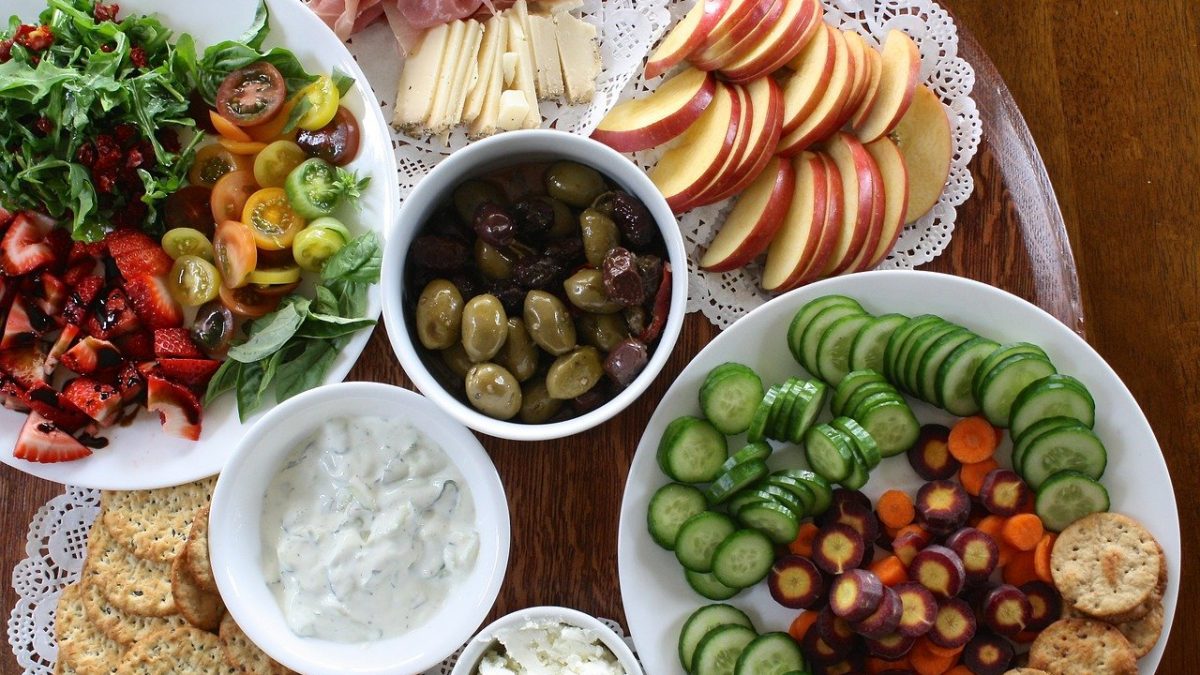Table of Contents
Introduction
Healthy eating uses the healthy eating plate as a director for making healthy meals whether helped at the table or complete in a lunch case. Eating a wide diversity of healthy foods helps keep you in good health and protects against chronic disease.
Eating a well-balanced diet means eating various foods from each of the five food groups daily in the recommended amounts.
It is also essential to choose various foods from within each food collection.
Take-out foods, cakes, biscuits, and soft drinks are typically high in saturated fat, added salt, or added sugars. They should be considered appurtenances to your regular diet and only eaten occasionally and in small amounts.
Daily food serves are diverse for children, youths, women, and men.
Types of Healthy Eating
Eat a Diversity of Foods
Healthy eating resources eating a wide variety of nutrients from each of the five main food sets in the amounts recommended. The Aboriginal Australian Dietary Guidelines provide up-to-date advice about the types and quantity of foods we need to eat for our health these are in the Australian Guide to Healthy Eating.
Eating a change of foods from the five main food groups provides a range of different nutrients to the body, helps good health and can help decrease the risk of disease, and keeps your diet interesting with different flavours and textures.
Many foods that frequently feature in modern diets do not form part of the five food collections. These foods as ‘junk’ foods, ‘discretionary choices’ or ‘occasional foods,’ containers be liked sometimes but should not regularly feature in healthy food. Fats and oils are high in kilojoules than required for a healthy diet in small amounts.
No substance you’re starting, making minor changes to make your eating closer to the Aboriginal Australian Dietary Guidelines accessible. Just pay attention to eating foods from the five significant food collections and reducing your intake of occasional foods.
5 Major Food Groups of Healthy Eating
The Australian Guide to Healthy Eating sets the foods that make up our everyday diets into five major food groups.
The Five Food Groups are
potatoes and legumes or beans
fruit
lean meats and poultry, fish, eggs, tofu, nuts, and seeds, legumes or beans
scrap (cereal) foods, mostly whole grain or high cereal fibre changes
milk, yoghurt, cheeseflower, or stand-ins, mainly reduced fat.
Foods because they provide similar amounts of critical nutrients. For example, the essential nutrients of the milk, yoghurt, cheese, and changes group include calcium and protein, while the fruit collection is a reasonable basis of vitamins, especially vitamin C.
You are eating a varied, well-balanced diet income eating various foods from each of the five food collections daily in the suggested quantities. Since different foods provide different types and amounts of essential nutrients, choosing multiple foods within each food group is necessary. As a bonus, choosing various foods will help make your meals enjoyable to avoid getting bored with your diet.
Occasional Foods in Healthy Eating
About foods do not fit into the five food collections since they are unnecessary for a healthy diet. These foods’ discretionary choices’ irregularly. The habit is too high in saturated fat, added sugars, extra salt or alcohol, and low essential nutrients like fibre. These foods and beverages can also be too high in kilojoules (energy). Often eating more kilojoules than your body needs will lead to heaviness improvement.
Examples of ‘discretionary choices’ or chance foods are
sweet biscuits, cakes, desserts, and pastries
treated meats and fatty, salty sausages, savoury tarts, and pies, with high fat or salt pleased
take-out diets such as hot chips, hamburgers, and pizza
sickly reduced milk
alcoholic drinks
ice cream and other ice sweets
confectionary and chocolate
commercially fried foods
potato chips, crisps, and other fatty and salty snack foods, including some savoury biscuits
cream, butter, and spreads that are high in soaked fats
sugar-sweetened soft drinks and cordials, sports, and vigour beverages.
It’s okay to consume some of these foods as an extra treat now and then. But if these foods often replace more nutritious and healthier foods in your diet, your risk of evolving obesity and chronic disease, such as heart disease, stroke, type 2 diabetes, and some forms of cancer, increases.
Uses of Healthy Fats in Healthy Eating
The Australian Dietary Guidelines include a small payment for healthy fats each day.
Consuming unsaturated (healthy) fats in small quantities is essential for a healthy diet. It helps with:
the interest of vitamins (A, D, E, and K)
plummeting your risk of heart disease
sad your fat levels – if the healthy fats replace saturated (bad) fats in your diet.
There are two fundamental kinds of unsaturated body fat
monounsaturated fats – found in olive and canola oil, avocados, cashews, then almonds
polyunsaturated fats, such as
omega-3 fats – create in fatty go fishing
omega-6 fats – found in safflower and soybean oil, and Brazil mad.
The most fantastic way to contain healthy fats in your diet is to replace saturated fat that you may now be eating with a healthier, unsaturated fat option.
Learn more about fats and oils.
Needs from Each Food Group in Each Healthy Eating
How considerable you need from each food group each day be contingent on your age, gender, and activity levels. The Australian Guide to Healthy Eating plans how many serves you and your family need each day and standard fit sizes for foods and drinks.
Conclusion
Make most of your meal potatoes and fruits – ½ of your plate.
Purpose for colour and change, and recall that potatoes don’t count as potatoes on the Healthy Eating Plate because of their negative influence happening blood sugar.
Go for whole grains – ¼ of your bowl.
Entire and intact grains—complete wheat, barley, wheat berries, quinoa, oats, brown rice, and nutriments complete with them, such as whole wheat pasta—consume a milder blood sugar and insulin than white bread, white rice, and other refined grains.

